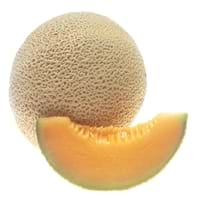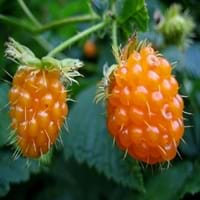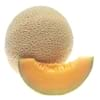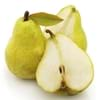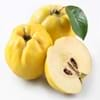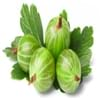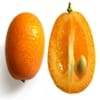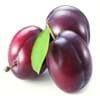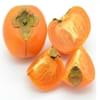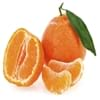Health Benefits
Cancer prevention, Heart care, Improves eye vision, Prevents diabetes, Reduces stress
Cancer prevention, Improves stomach health, Weight loss properties
General Benefits
Boosts immune system, Cures cough, Cures fever, Digestive aid, Eye care, Helps in weight loss
Anti oxidant properties, Digestive aid, Eye care, Healing of wounds, Improves eye vision, Maintains healthy cholesterol level, Strengthens bones
Skin Benefits
Anti-aging benefits, Hydrates skin, Skin rejuvenation, Treatment of skin diseases
Anti-aging benefits, Reduces wrinkles
Hair Benefits
Good conditioner, Prevents hair loss, Protects hair
Protects hair, Regulates hair growth
Allergy Symptoms
Abdominal pains, Anaphylaxis, Breathing difficulty, Diarrhea, Dizziness, Hives, Itching of mouth, Nasal congestion, Nausea, Vomiting
Abdominal pains, Itching, Swelling of mouth, tongue or lips
Side Effects
Allergic reaction, Bloating, Indigestion
Allergic reaction
Best Time to Eat
As a snack in the late afternoon, Don't consume at night and before bed, Eat the fresh ones, avoid mixing with any other foods, don't eat after meal., Morning time (before lunch)
Best if taken as a breakfast (or empty stomach), As a snack in the late afternoon, Don't eat after meal, Morning time (before lunch)
Vitamin B5 (Pantothenic Acid)
Vitamin C (Ascorbic Acid)
Vitamin K (Phyllochinone)
Lutein+Zeaxanthin
Not Available
Phytosterol
Not Available
Calories in Fresh Fruit with Peel
Not Available
Calories in Fresh Fruit without Peel
Not Available
Calories in Frozen Form
Not Available
Calories in Dried Form
Not Available
Calories in Canned Form
Not Available
Not Available
Season
Summer
All seasons
Varieties
Hales Best Jumbo, Sweet 'N Early Hybrid, Hearts of Gold, Ambrosia, Athena, Honey Bun Hybrid, Fastbreak and Superstar
Golden ruby and Olympic Double
Color
Orange
Pink, Pink red, Salmon, Salmon yellow
Inside Color
Creamy Orange
Pink
Taste
Juicy, Musky, Sweet
Sweet
Origin
Africa, India
North America
Climatic Conditions
Dry, Hot
Moist
Facts about
- Cantaloupe is known as rock-melon in some parts of the world.
- Christopher columbus first introduced cantaloupes to north america in 1494.
- The name 'Cantaloupe' as it is cultivated in papal gardens of cantaloupes, Italy.
- The name salmon berry is due of the resemblance with 'salmon roe'.
- In 1 kg of fruit, there are total 315,250 seeds.
- Salmon berry tree leaves act as an excellent replacement for tea.
Spirits
Yes
Not Available
Cocktails
Yes
Not Available
Top Producer
China
United States of America
Other Countries
Iran, Romania, Turkey, United States of America
Canada, Mexico
Top Importer
United States of America
Not Available
Top Exporter
Spain
Not Available
Botanical Name
Cucumis melo var. cantalupensis
Rubus spectabilis
Synonym
Cucumis melo var. reticulatus
Not Available
Subkingdom
Tracheobionta
Tracheobionta
Division
Magnoliophyta
Magnoliophyta
Class
Magnoliopsida
Magnoliopsida
Subclass
Dillenhidae
Rosidae
Order
Cucurbitales
Rosales
Family
Cucurbitaceae
Rosaceae
Species
C. melo
R. spectabilis
Generic Group
Gourd
Not Available
Difference Between Cantaloupe and Salmonberry
We might think that Cantaloupe and Salmonberry are similar with respect to nutritional value and health benefits. But the nutrient content of both fruits is different. Cantaloupe and Salmonberry Facts such as their taste, shape, color, and size are also distinct. The difference between Cantaloupe and Salmonberry is explained here.
The amount of calories in 100 gm of fresh Cantaloupe and Salmonberry with peel is Not Available and 47.00 kcal and the amount of calories without peel is 34.00 kcal and Not Available respectively. Thus, Cantaloupe and Salmonberry belong to Low Calorie Fruits and Low Calorie Fruits category.These fruits might or might not differ with respect to their scientific classification. The order of Cantaloupe and Salmonberry is Cucurbitales and Rosales respectively. Cantaloupe belongs to Cucurbitaceae family and Salmonberry belongs to Rosaceae family. Cantaloupe belongs to Cucumis genus of C. melo species and Salmonberry belongs to Rubus genus of R. spectabilis species. Beings plants, both fruits belong to Plantae Kingdom.
